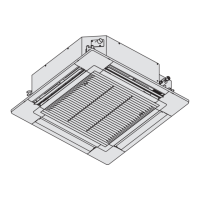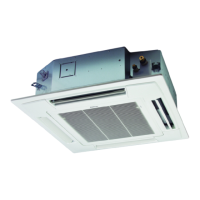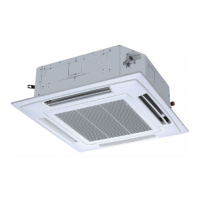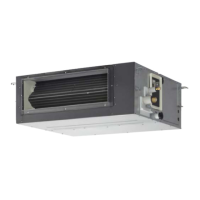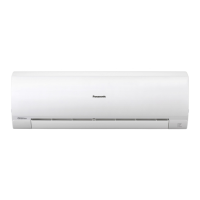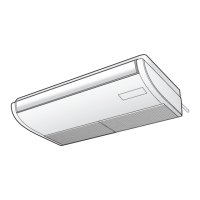43
Cautions During Brazing
● Replace air inside the tube with nitrogen gas to prevent copper oxide film from
forming during the brazing process. (Oxygen, carbon dioxide and Freon are not
acceptable.)
● Do not allow the tubing to get too hot during brazing. The nitrogen gas inside
the tubing may overheat, causing refrigerant system valves to become damaged.
Therefore allow the tubing to cool when brazing.
● Use a reducing valve for the nitrogen cylinder.
● Do not use agents intended to prevent the formation of oxide film. These agents
adversely affect the refrigerant and refrigerant oil, and may cause damage or
malfunctions.
5-2. Connecting Tubing Between Indoor and Outdoor Units
When connecting to the mini VRF 8HP, 10HP (outdoor units type LE1 only), select the main
tube by using the following values. For details, refer to the installation instructions of the outdoor
unit.
Indoor unit 22 28 36 45 56 60 73 90 106 112 140 160
Type U2 0.180 0.203 0.288
(1) Tightly connect the indoor-side refrigerant tubing extended from the wall with the outdoor-side
tubing.
Indoor Unit Tubing Connection
For R410A Unit : mm
Indoor unit type 22 28 36 45 56 60 73 90 106 112 140 160
Gas tube ø12.7 ø15.88
Liquid tube ø6.35 ø9.52
For R32 Unit : mm
Indoor unit type 22 28 36 45 56 60 73 90 106 112 140 160
Gas tube ø12.7 ø15.88
Liquid tube ø6.35 ø9.52
(2) To fasten the flare nuts, apply specified torque.
● When removing the flare nuts from the tubing connections, or when tightening them after
connecting the tubing, be sure to use two spanners.
When tightening the flare nuts, use a torque wrench.
If the flare nuts are over-tightened, the flare may be damaged, which could result in refrigerant
leakage and cause injury or asphyxiation to room occupants.
● For the flare nuts at tubing connections, be sure to use the flare nuts that were supplied with
the unit, or else flare nuts for R410A, R32 (type 2). The refrigerant tubing that is used must
be of the correct wall thickness as shown in the following table.
Because the pressure is approximately 1.6 times higher than conventional refrigerant R22
pressure, the use of ordinary flare nuts (type 1) or thin-walled tubes may result in tube
rupture, injury, or asphyxiation caused by refrigerant leakage.
● In order to prevent damage to the flare caused by over-tightening of the flare nuts, use the
following table as a guide when tightening.
01_350115_EU_Eng.indb 43 2023/3/1 13:52:51

